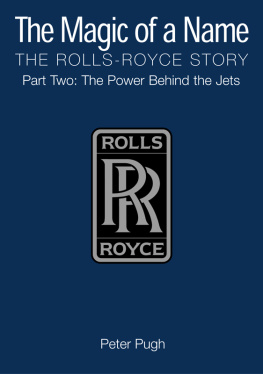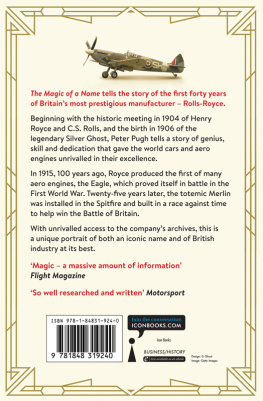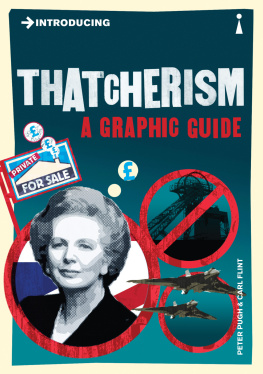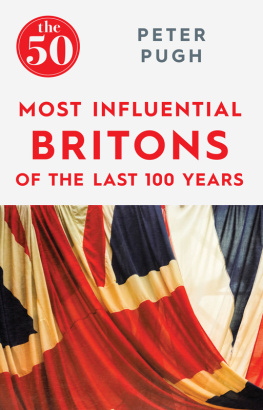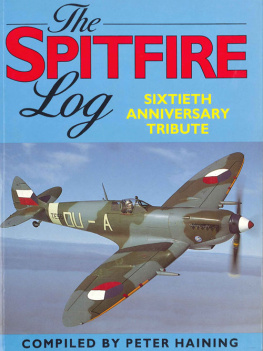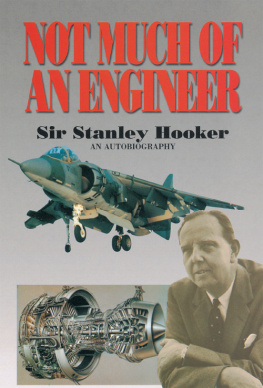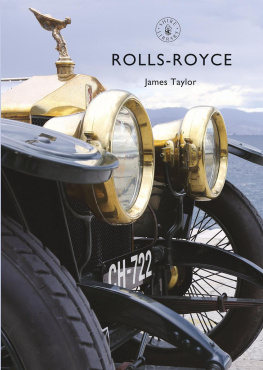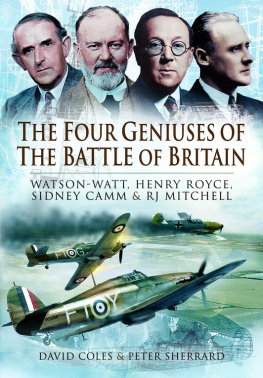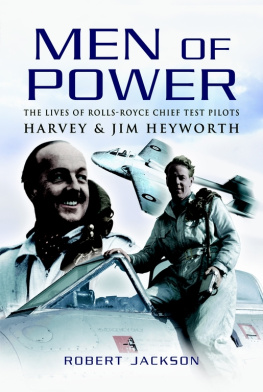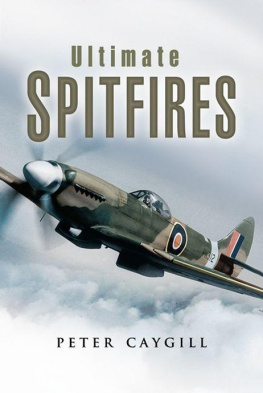Our future lies on the turbine engine side. There are no new aircraft contemplated or being built which will take the Merlin or Griffon engines, or any other piston engines.
Ernest Hives to the Rolls-Royce Board on 30 May 1946
The scale of advance was enormous. The RB 211 was the largest turbofan built by Rolls-Royce, being roughly double the thrust of the Conway.
Philip Ruffles, Director of Engineering and Technology, Rolls-Royce 2000
Im not blaming anyone else... We had promised a bit more than we could perform. Things were not deplorable. Flight engines were four months late. Four months is four months but it is not deplorable. The deplorable thing was the cost... The accountants never got cash-flow into our heads.
Sir David Huddie in 1999 on the Rolls-Royce receivership in 1971
We knew that if we were to stay competitive in the long-term we must be able to meet our airline customers requirements over the whole of their range.
Sir Ralph Robins, Chairman, Rolls-Royce plc 2000
Printed edition published in the UK in 2001 by
Icon Books Ltd, Omnibus Business Centre,
39-41 North Road, London N7 9DP
email: info@iconbooks.net
www.iconbooks.net
This electronic edition published in 2012 by Icon Books Ltd
ISBN: 978-1-84831-480-1
Text copyright 2001 Peter Pugh
The author has asserted his moral rights
No part of this book may be reproduced in any form, or by any means, without prior permission in writing from the publisher.
Typesetting by Hands Fotoset, Woodthorpe, Nottingham
Design and layout by Christos Kondeatis
C ONTENTS
P HOTO C REDITS
The majority of the photographs have been provided by the Rolls-Royce Heritage Trust, most from the Derby Branch, but a significant number, particularly those of Bristol engines or aeroplanes, from the Bristol branch.
The photograph of Bill Gwinn and his Pratt & Whitney colleagues in the group between pages 22 and 23 is reproduced by kind permission of United Technologies Corporation (Archive), Hartford, Connecticut 06101.
The photographs of the Mustang and of HMS Ocean, also in the group between pages 22 and 23, and of HMS Invincible between pages 278 and 279 are reproduced by kind permission of the Imperial War Museum.
Most of the photographs of Rolls-Royce and Bentley motor cars in the group between pages 182 and 183 were provided by the Sir Henry Royce Memorial Foundation.
Most of the photographs of Rolls-Royce diesel engines and products with those engines powering them, in the group between pages 214 and 215, were provided by Brian Leverton and Peter Vinson.
The photographs of Admiral Rickover, the USS Nautilus and HMS Dreadnought, also in the group between pages 214 and 215, were provided by Andrew Rice, Communications Manager, Rolls-Royce Naval Marine.
T HE V ALUE OF M ONEY
In a book about a business, we cannot ignore the changing value of money, and with the exception of the inter-war years the twentieth century has been inflationary. There is no magic formula for translating 1900 prices into those of 2000. Some items have exploded in price, others have declined. We have to choose some criterion of measurement, and I have chosen the average working wage.
The Victorian age was one of stable prices, but prices started to rise just before the First World War, and rose sharply at the end of it. (Wars are always inflationary, because they distort supply and demand.) Immediately after the war, prices were more than twice as high as in 1914, and although they declined somewhat in the depressed economic conditions of the 1920s and 30s, they remained about twice as high as those before the war.
Price controls and rationing were imposed in the Second World War, but as these were withdrawn, prices again doubled. Inflation continued at about 3 per cent a year through the 1950s and 60s, but then rose sharply, almost catastrophically, in the 1970s. Although it was brought under control by the end of that decade, there were two more nasty upward blips in the early and late 1980s before the more stable 1990s.
I have used the following formula:
Late nineteenth century multiply by 110 to equate with todays prices
Early twentieth century multiply by 100 to equate with todays prices
191845 multiply by 50 to equate with todays prices
194550 multiply by 30 to equate with todays prices
195060 multiply by 25 to equate with todays prices
196070 multiply by 18 to equate with todays prices
197074 multiply by 15 to equate with todays prices
197577 multiply by 10 to equate with todays prices
197880 multiply by 6 to equate with todays prices
198087 multiply by 3 to equate with todays prices
INTRODUCTION
As I said in the Introduction to the first part of this history, The Magic of a Name, The Rolls-Royce Story, The First 40 Years, many books have been written about Rolls-Royce over the years. The Bibliography on pages 328 to 332 shows nearly fifty specifically on Rolls-Royce cars or aero engines or both, and there are hundreds more which devote many words to Rolls-Royces products and their importance. However, most of these books are either biographies of the leading personalities, or works that tackle specific aspects of the cars or aero engines.
The last publication to attempt a truly comprehensive history of Rolls-Royce was Harold Nockoldss The Magic of a Name, published by Foulis in 1938 and reprinted several times until a third edition was finally printed in 1972. This book, with the one published last year, and the third part to be published to coincide with the hundredth anniversary of the meeting of Royce and Rolls, is the first attempt to cover comprehensively the story of Rolls-Royce from its earliest days until the present. The Rolls-Royce name is magic, made so by the calibre of the people and its products, and the title The Magic of a Name is singularly appropriate. Foulis, now owned by Haynes Publishing, has kindly allowed us to use the title again.
The first part of this trilogy took the story from 1904 to 1945 with all the excitement of the meeting of the great engineer, Henry Royce, and the aristocratic motor car enthusiast and salesman, the Hon. C.S. Rolls, through the early pioneering days with the best car in the world, the Silver Ghost, on to the design by Royce and production by Rolls-Royce of the leading aero engine of the First World War, the Eagle. We moved on to Royces design of an aero engine which enabled Britain to retain the Schneider Trophy. This association with the aircraft designer, R.J. Mitchell, led on to the Spitfire and Rolls-Royces Merlin engines. As we saw, without the Spitfire and the Hurricane, and the Merlins that powered them, the Battle of Britain would have been lost. Finally, we saw how Ernest, later Lord, Hives realised the significance of the jet engine and how he backed Sir Frank Whittle to the hilt.
And that is where we pick up the story in this part, with Whittle and the jet engine. We see how Rolls-Royce adapted itself quickly from mass-producing piston aero engines to designing and producing gas turbine engines, initially for aero engines but later to power ships and power stations also. At the same time, Rolls-Royce returned to the motor car business and for the first time produced complete cars, not just engines and chassis. It also began to manufacture diesel engines.
We shall see how the leaders of the company realised that Rolls-Royce must win orders in the USA if the company was to survive as a major force in the aero engine business, and how this led to the design of an innovative and world-beating three-shaft engine, the RB 211. Unfortunately, we shall have to go through the pain of how the development of this engine so overstretched the company that it was forced into receivership.

